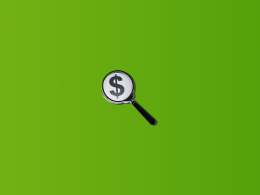CAC is a crucial metric that measures the cost of acquiring a new customer for a business. Whether you’re an e-commerce retailer or a SaaS business, in today’s highly competitive marketplace, where customer acquisition is becoming increasingly challenging, understanding and optimizing CAC can be the difference between success and failure. CAC can provide businesses with valuable insights into their marketing and advertising strategies, customer retention, and overall profitability.
In this article, we’ll give an overview of the concept of CAC, dive into why customer acquisition cost important for businesses, how to calculate and improve it. We’ll also discuss the factors that affect CAC, the role of customer acquisition cost in customer lifetime value (LTV), and give practical tips for reducing CAC while maintaining customer satisfaction and loyalty.
Understanding the customer acquisition cost: What is CAC?
Customer acquisition cost, or CAC, is the total cost incurred by a business to acquire a new customer. Simply put, CAC measures how much an organization spends to acquire new customers. Customer acquisition cost includes all expenses related to marketing and advertising, such as social media ads, paid search campaigns, content marketing, events, and sponsorships. Additionally, CAC includes sales team salaries, commissions, and bonuses, as well as any other costs associated with lead generation and conversion.
Overall, customer acquisition cost is a key performance indicator (KPI) that can provide businesses with a comprehensive view of their customer acquisition costs and help them gain the necessary competitive edge.
You could learn more about KPIs and KPI reporting and data analytics in e-commerce.
How to calculate customer acquisition cost: CAC Formula
To calculate CAC, businesses need to consider all the costs incurred in acquiring a new customer. The formula for calculating CAC is:
Customer Acquisition Cost (CAC) = (All Marketing and Sales Costs) / (Number of New Customers Acquired)
In other words, to calculate customer acquisition cost, you divide the total cost of customer acquisition by the number of new customers acquired within a specific period. For example, if a business spent $10,000 on marketing and sales efforts and acquired 100 new customers within one month, the CAC would be $100.
As we’ve already mentioned above, the total marketing and sales costs include all the expenses associated with acquiring new customers, while the number of new customers acquired refers to the number of customers that a business has successfully converted during a specific period, such as a month or a quarter.
Below, we’ll break down the different components of customer acquisition cost that include the following types of acquisition costs:
Acquisition costs related to marketing
These are expenses related to advertising, such as social media ads, paid search campaigns, content marketing, events, and sponsorships.
Acquisition costs related to sales
These costs include salaries, commissions, and bonuses paid to the sales team for their efforts in acquiring new customers.
Acquisition costs related to lead generation
They’re related to generating and qualifying leads, such as software tools, customer relationship management (CRM) platforms, and outsourced lead generation services.
Acquisition costs related to technology
Such expenses are related to marketing automation tools, analytics platforms, and other software that businesses use to optimize their marketing and sales efforts.
By understanding the different components that make up customer acquisition cost, businesses can evaluate the ROI of each customer acquisition channel and determine which ones are the most cost-effective. This information can be used for optimizing marketing and sales strategies, reducing CAC, and boosting the financial performance.
Factors that affect customer acquisition cost
CAC can be influenced by a variety of external and internal factors:
External factors that affect customer acquisition cost
- Competition: If a company operates in a highly competitive market, it may have to spend more on marketing and advertising to acquire new customers, which can increase CAC.
- Market saturation: In a market which is saturated with similar products or services, it may be more challenging and costly for a company to stand out and attract new customers, eventually leading to higher CAC.
Internal factors that affect customer acquisition cost
- Pricing strategies: If a company’s prices are too high, it may limit its customer base, resulting in a higher CAC. Conversely, if the prices are too low, it may attract a large number of customers, but it may not be profitable in the long run.
- Advertising spend: When the advertising expenses of a company are too high but it doesn’t generate significant returns, it can increase CAC.
- Customer retention: If a company struggles to retain existing customers, it may need to spend more on acquiring new ones, which will lead to higher CAC.
Moreover, when analyzing customer acquisition cost, businesses need to consider the interaction between external and internal factors, as they can impact each other. For example, an increase in competition can affect a business’s pricing strategy, which can impact its advertising spend and customer retention, leading to higher CAC.
The key takeaway here is that businesses need to continually monitor and evaluate the different factors that affect CAC for optimization of their performance, reduction of costs, and growth of profitability.
Why is CAC important?
Understanding CAC is vital for businesses because it provides valuable insights and allows them to streamline their marketing and advertising strategies. Here are some reasons why CAC is essential:
1. Better decision-making: By calculating CAC, a company can evaluate the effectiveness of its marketing and advertising strategies and make data-driven decisions about future investments. It can also help a company identify potential bottlenecks in its sales funnel, such as low conversion rates or high customer churn, which can be addressed to improve overall profitability.
2. Cost optimization: CAC can help a company optimize their customer acquisition costs and reduce unnecessary expenses. Evaluating the ROI of each customer acquisition channel lets businesses determine which resources generate the most return and how to allocate their budget.
3. Customer lifetime value (LTV): CAC plays a critical role in determining customer lifetime value, which is the total revenue a business can expect to generate from a customer over the course of their relationship. That’s why it’s vital for businesses to be aware of their LTV CAC ratio, calculated by dividing customer lifetime value by customer acquisition cost, which is a marker of a company’s profitability. So by optimizing CAC, businesses can increase LTV, which is essential for sustainable growth and long-term success.
A high CAC can indicate underlying issues with a business’s sales funnel. For example, a high CAC may suggest that a company is spending too much on marketing and advertising or struggling to convert leads into customers. By identifying the root causes of a high CAC, businesses can take corrective actions that guarantee the growth of their overall performance and profitability.
Generally, understanding CAC is crucial for marketers that want to bring their company to the next level, increase profitability, and achieve long-term success. By optimizing CAC, a company can enhance its marketing and sales efforts, reduce costs, and increase customer lifetime value.
Wrapping up CAC: How customer acquisition cost impacts your business performance
All in all, CAC is an essential business metric for e-commerce and SaaS businesses that reflects the cost of acquiring a new customer. By understanding and optimizing CAC, a company can reconsider its marketing and advertising strategies, rearrange resources, reduce unnecessary expenses, and increase customer lifetime value, which, in today’s highly competitive environment, is becoming more critical than ever.
We hope this article has provided you with actionable insights into the importance of CAC and how it can help your company achieve long-term business success.
And in the world of valuable insights into your company’s performance, your ultimate solution would be Synder Business Insights. This software is designed to automatically gather data from all your sales channels and payment gateways and generate actionable reports about your sales, customer behavior, and products performance. With Synder Business Insights, you’ll easily get access to detailed information about your gross sales, AOV, LTV, purchase frequency, top performing customers, least performing customers, new and returning customers, top performing products, least performing products, products most purchased together, and more.
Sign up for a 15-day free trial or book office hours to learn more about Synder’s outstanding capabilities.







.png)
